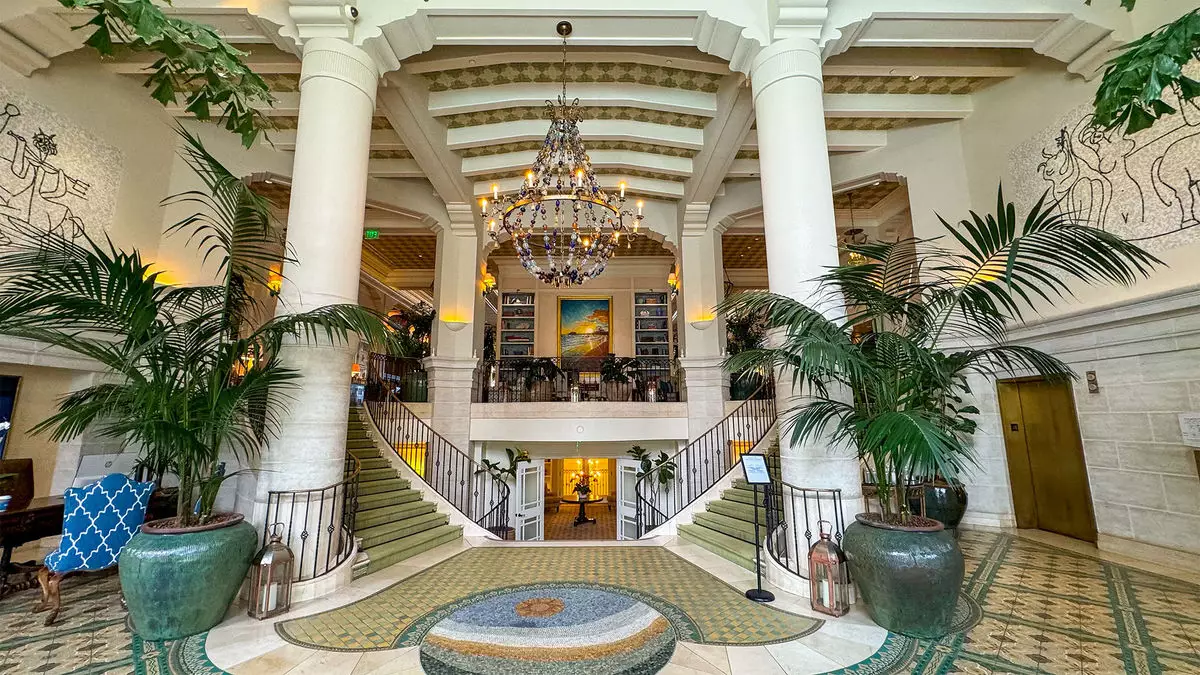On a seemingly typical Monday in late January, the picturesque Malibu Beach Inn stands resilient against the backdrop of disaster. The venue had recently reopened its doors after a concerning 16-day closure due to the Palisades Fire—a fierce blaze that ravaged the nearby hills separating Malibu from the larger Los Angeles area. Despite the serenity of a calm, sunny day and the inviting terrace of the Carbon Beach Club Restaurant overlooking the Pacific, a disquieting reality lingers just out of sight. The tranquility of the beach belies the destruction that lay less than a mile away.
The contrast between the comforting sights of gentle waves and the chaos of fire damage speaks volumes about the duality of life in Malibu. The dining patio, usually bustling with patrons, echoes with the solitude of only a single table occupied, primarily because most guests are first responders engaged in firefighting efforts. Gregory Day, president of hospitality for the hotel’s owner, has been forced to adapt to a new narrative; instead of welcoming vacationers, the focus has shifted entirely to allocating resources for those who are on the frontline of rescue operations.
Hotel Adaptations to Unforeseen Challenges
In an extraordinary move to support emergency personnel, the Malibu Beach Inn has stepped beyond conventional business practices. Offering discounted accommodations, Day notes, “We’ve never taken a government rate in the nine years I’ve been here. But it just wasn’t the time to say no.” By providing first responders with a 30% to 40% discount off the standard $1,000 nightly rate, the hotel demonstrates a commitment to community aid.
Moreover, as fires leave behind more than charred landscapes, the need for thorough restoration becomes paramount. Day leads a proactive initiative to remediate any remnants left behind by the fire, hiring professional services to “scrub the air” and clean every surface of the hotel, including a staggering 3,600 linens. The installation of HEPA air purifiers in each guest room not only signifies a push for hygiene but also emphasizes a dedication to guest safety. Furthermore, their partnership with the nearby Cure Medical Spa for mental health services exemplifies the Hotel’s understanding that recovery is multi-faceted—not only physical but psychological.
The repercussions of the fire extend beyond the immediate destruction; they encompass broader tourism dynamics. Currently, the Pacific Coast Highway (PCH) faces significant disruption, transforming what should be a short drive into a lengthy detour. Day emphasizes the importance of reestablishing access, saying, “Once PCH fully reopens, that will be a game-changer.” For many local businesses to thrive again, the influx of tourism is crucial. The staff, his most immediate concern, depend on returning patrons for their livelihoods amidst precarious economic stability.
Other hotels, such as the Fairmont Miramar in Santa Monica, echo these sentiments. General manager Simon Fricker highlights the disjunction between reality and perception. “The fact is, only 2% of L.A. County has been affected by the fire, but the perception is it’s 98%,” he states. This perception poses a serious risk as potential visitors may be deterred from traveling, not realizing that most attractions remain unaffected.
This crisis emphasizes the necessity for community solidarity. As Zachary Courtney, marketing director at Fairmont Miramar, notes, local hotels have both the capacity and responsibility to support the displaced while welcoming travelers. By slashing rates for evacuees and first responders by up to 40%, the hotel continues to be a safety net amidst the chaos. Community efforts extend even further, with meal services for first responders and collaborations with local food banks.
In moments of adversity, recovery depends heavily on the choices individuals and collective communities make. Fricker advocates for maintaining travel plans: “Don’t cancel — please support our colleagues.” His calls to arms to invigorate tourism resonate deeply, igniting a glimmer of hope for the recovery of the local economy.
As optimistic as these messages are, leaders like Charlie Lopez-Quintana of Santa Monica’s Shutters on the Beach relay hard-learned lessons from the devastating Maui wildfires. Miscommunication during such crises can exacerbate an already complicated situation; initial warnings to avoid travel have since transformed into calls for support. Such mixed messaging threatens to solidify unfavorable perceptions that can linger long after the ashes have settled.
Lopez-Quintana highlights the necessity for accurate representation of the area’s safety, stating, “L.A. County is also big and mostly untouched. So we know our messaging has to be different.” Their commitment to house evacuees and provide comprehensive services proves instrumental in fostering a sense of community.
This period of recovery for Malibu is not merely about rebuilding—it embodies a revival of hope, compassion, and collective strength. Each hotel in the area plays a unique role in restoring both livelihoods and the local economy. As the distressing fire recedes into memory, the spirit of resilience drives Malibu’s businesses forward, inviting individuals to support their community and explore the beauty that remains. The journey ahead will undoubtedly carry challenges, but with each supportive gesture, Malibu slowly reasserts its position as a resilient coastal gem.

